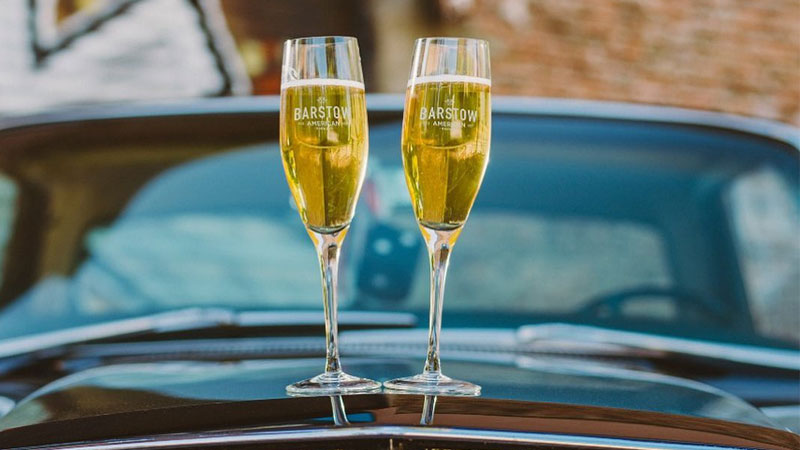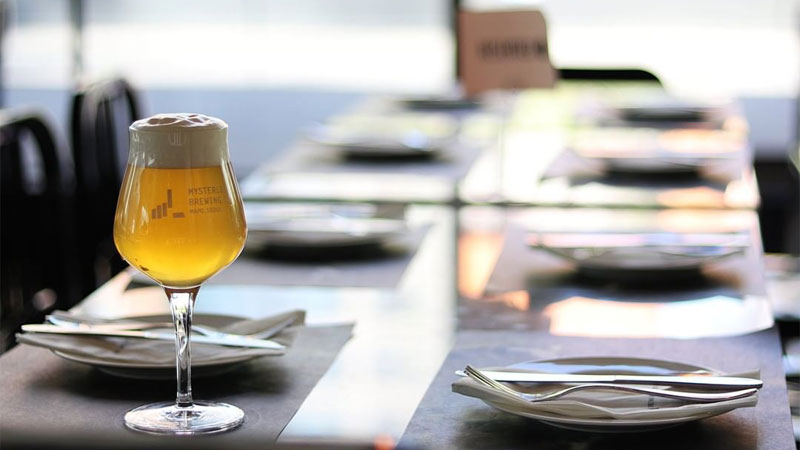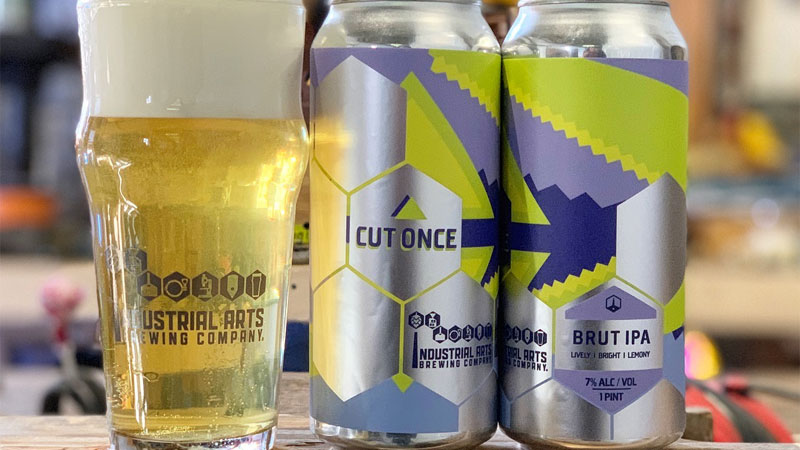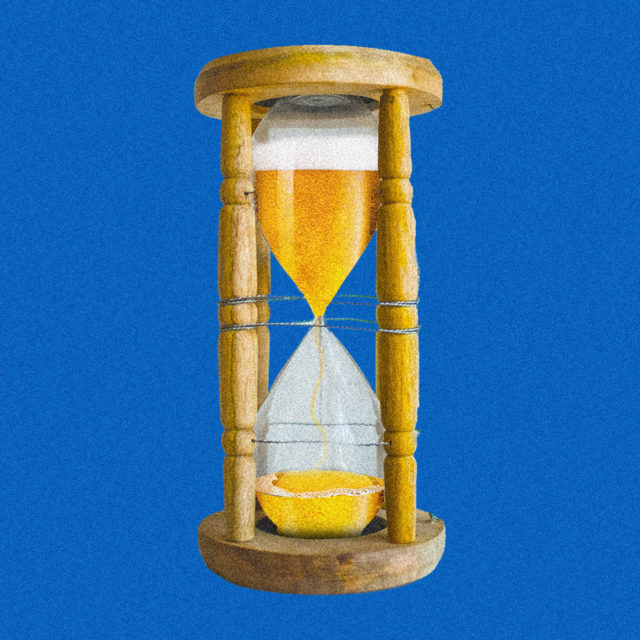On May 1, 2019, MillerCoors announced the launch of Hoppin’ Bubbly, a brut IPA co-branded as a Miller High Life and Terrapin Beer Co. collaboration. It’s a mashup of the light-and-bubbly “Champagne of beers,” Miller High Life, and a hop-forward Rye Pale Ale from Terrapin, another MillerCoors-owned brand.
The timing struck some in the beer community as ironic. Two weeks earlier, in mid-April, beer blogger and author Jeff Alworth published a blog post questioning the brut IPA trend. An accompanying Twitter poll yielded bleak results: Less than a quarter of respondents believed brut IPA was “still a thing.”
(In preparation for this story, I mimicked his survey on May 5, 2019, and received similar results.)
For brewers and fans, this author included, brut IPAs are definitely “a thing,” evidenced by dozens of releases, from small outfits like Five Boroughs Brewing Co. in Brooklyn; to major craft beer brands like New Belgium and Sierra Nevada; and now, one of the world’s largest brewers, MillerCoors. They are dry, effervescent, aromatic alternatives to ubiquitous juicy or hazy IPAs.
“Brut IPAs are attracting the more savvy craft beer drinker. People who are avid IPA drinkers will turn to bruts to satisfy the need for more clean and crisp hop flavors,” Matt Johnson, brewmaster of brewery operations at Karl Strauss Brewing, says.

If you’d have asked a brewer or beer geek about brut IPA a year and a half ago, you’d have gotten blank stares. Virtually nonexistent until the end of 2017, the term “brut IPA” began charting on Google Trends in May 2018. Six months earlier, in November 2017, San Francisco’s Social Kitchen and Brewery released what is widely considered the first brut IPA, Hop Champagne Extra Brut IPA. Brewer Kim Sturdavant coined the term after experimenting with an amylase enzyme typically used to lighten up the mouthfeel of heavier beers, like imperial stouts.
“I had it in my head: What would happen if I used this [enzyme] to make a basically sparkling hop beverage with no sweetness in it?” he told SFGATE in March 2018.
At least 10 more brut IPAs had launched in California at that time, from such breweries as Cellarmaker in San Francisco, Temescal in Oakland, and Eagle Rock Brewing in Los Angeles. By May 2018, brut IPAs popped up in Colorado, Illinois, and New Hampshire.
And by June 2018, trend pieces from drinks publications including this one touted brut IPAs as a trend. But brut IPAs persisted, reaching such far-flung locales like Sao Paulo, Brazil, Seoul, South Korea, and Moscow, Russia. In the span of six months, Sturdavant’s “hop Champagne” experiment had become a global trend.

New Belgium announced its brut IPA in December 2018, in time for New Year’s Eve celebrations. Sierra Nevada’s Brut IPA hit store shelves in January 2019. That month, Google searches for “brut IPA” peaked.
After that, internet interest plummeted. The search term “brut IPA” is less than one-third as popular as it was at its height.
(Specific figures on brut IPA sales volume are difficult to attain; since many brut IPAs are scanned under other codes, such as “seasonal,” volume data is minimal, Bart Watson, chief economist of the Brewers Association, tells VinePair.)
Some industry members believe brut IPA’s downfall is due to its inconsistent iterations. “I like the idea of brut IPA, but there wasn’t enough of a consensus of what they were supposed to be,” Dan Lamonaca, owner of Beer Karma, a beer retail store in Brooklyn, tells VinePair in an email. “The beers I tried were all over the map.”
After receiving samples of a brut IPA that contained “the same adjuncts … as milkshake IPAs,” with additions of fruit and vanilla, he says, “I’m ready to give up on the style.”
Jeff O’Neil, owner of Garnerville, N.Y.’s Industrial Arts Brewing, believes brut IPA serves a purpose as both a “backlash” to the cloying sweetness of New England-style IPAs, as well as a “rebrand” of hoppy, overly bitter West Coast IPAs.
“The hop varieties that we have at our disposal today are so much more varied and interesting (and expensive) than a decade ago,” O’Neil writes VinePair in an email. “In my opinion it has become something of a waste to hide them behind a ton of bitterness.”
If NEIPAs are too sweet, and West Coast IPAs too bitter, then brut IPA, like Goldilocks’ third bowl of porridge, is just right.
“[G]ood examples of [brut IPAs] are exceedingly easy to drink in quantity and are often relatively light and bright, which definitely satisfies a subset of our audience in a way that a sweet, juicy beer can’t,” O’Neil says.
“When you approach a good brut IPA, the flavor and aroma jump right out at you [with] tons of character, but then it finishes dry and refreshing with very little, if any, lingering bitterness,” Dave Thibodeau, co-founder of Ska Brewing in Durango, Colo., says.
“Our target demographic would be people like us,” he says, those who “love all things hops but at times don’t want to be so overwhelmed with a beer that they can’t drink another of.”

At Industrial Arts, Cut Once, a brut IPA O’Neil describes as “an evolution” of Week 104, which VinePair ranked among the best brut IPAs last year, is “rolling out occasionally … but it hasn’t sold or rated at anything close to what a hazy [IPA] would,” he says.
In June, Cut Once will be released alongside Measure Twice, a double-dry-hopped hazy double IPA. “If this says anything, we’re brewing twice as much of the DIPA [as] the brut,” O’Neil says.
Tellingly, in April 2019, the Brewers Association released its annual beer style guidelines, listing six different types of IPAs. Brut IPA is not one of them. By comparison, at the 2018 Great American Beer Festival (GABF), the BA received more than 400 entries in the “juicy or hazy IPA” category, surpassing any other category.
It turns out brewers and other professional beer geeks love brut IPAs, but the rest of the country’s craft beer drinkers still like their IPAs sweet and boozy.
In the wine world, professionals poo-poo sweet yet exceedingly popular wines like Moscato and Lambrusco and favor dry varieties like certain Cabernet Sauvignons. But the truth is, most Americans like sugary drinks.
Perhaps those of us who see brut IPAs as the answer to our parched palates’ thirst for balance are discovering little more than our own elitism.
“Seems to have ‘niche style’ written all over it,” Alworth tells VinePair in an email. “But we’ll see!”
